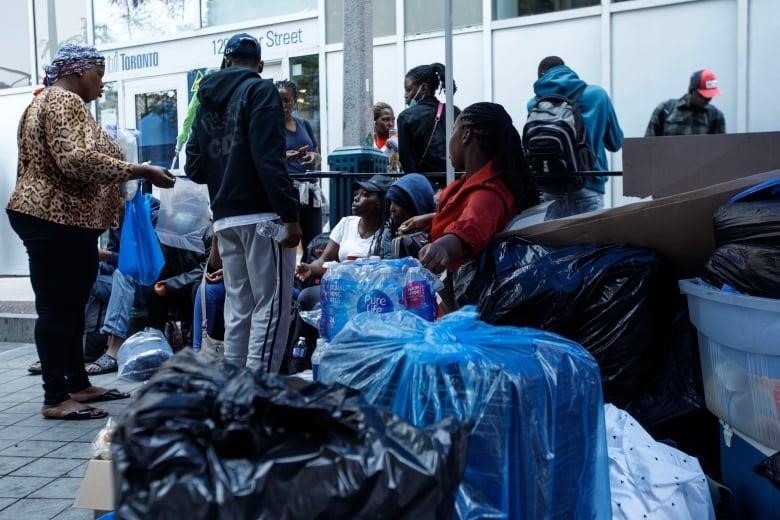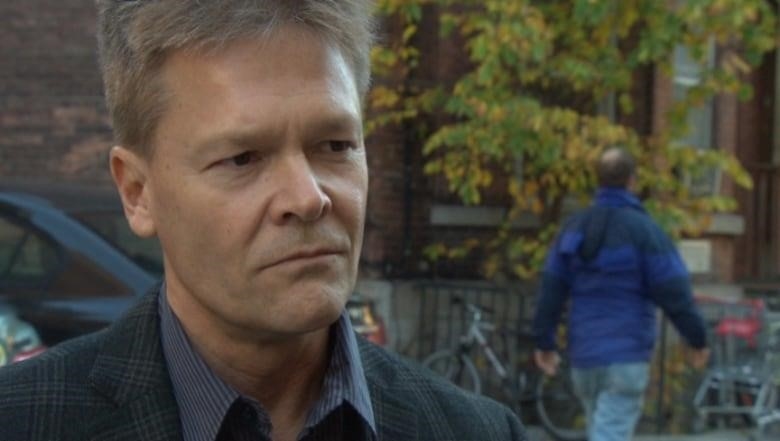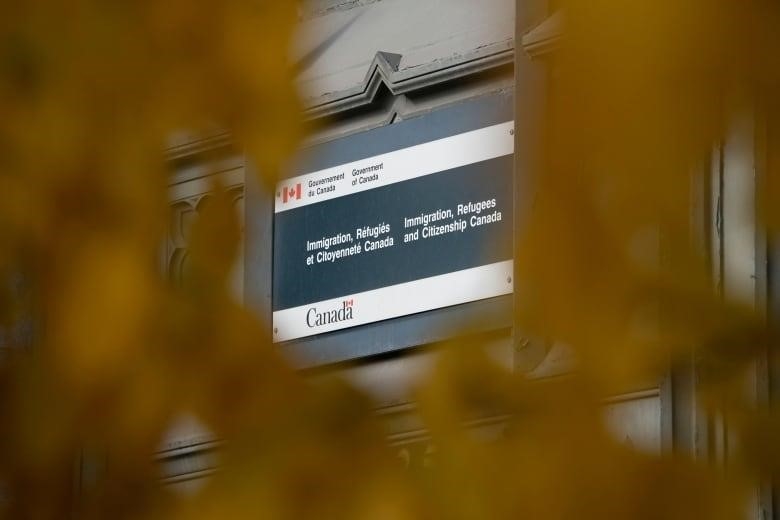
A charity leader says, “We’re right at the point where things are going to get bad really fast.
Ottawa shelters for the homeless are getting a lot of asylum seekers. This makes people worry that the refugee housing crisis that is overwhelming shelters in Toronto could be spreading to the capital.
CEO of the Ottawa Mission Peter Tilley said that in the last few weeks, a record number of migrants have come to the shelter on Waller Street.
When Tilley saw the data, it “floored” him. Since the beginning of June, the shelter has taken in 228 new people. Of those, 87 were new to the area. He said that most of them were trying to get asylum.
“That would be more than three times or even four times the number of refugees we usually get,” he said.
“The number of homeless people in Ottawa is already more than we can handle,” he said. “So it’s clear that we’re having trouble keeping up with all of this.”
Martine Dore, who is in charge of programs and services at Cornerstone Housing for Women, says that the number of new people looking for shelter there has gone up by 50% in just the last three months. Again, most are claiming to be refugees. She worries about what will happen if more people have to live on the streets because of the influx.
“When I heard about Toronto, it broke my heart and made me very worried about what we’ll have to deal with here in the future,” said Dore, who also said that her shelter is always full.
“It’s just another strain on a system that’s already under a lot of stress.”
‘I was afraid
As of June, Canada had processed nearly 60,000 asylum applications, which was the most at this point in the year since at least 2015.
There have been a lot of people in Toronto’s emergency shelters. The number of people seeking asylum there went from 530 per night in September 2021 to 2,800 this May. This caused a lot of people to camp out in front of a downtown intake office.

Data from the City of Ottawa shows that the number of single adults who were new to the emergency shelter system went from 121 in January to 222 in July, which is almost double the number in January. Over the same time period, there were fewer new people coming into family shelters.
There is no way to tell from the data how many of these new people are coming to seek asylum as refugees. They face unique problems because they don’t have a work permit and don’t get the help from the government that sponsored refugees do.
Tilley said that most claimants from Uganda, Burundi, Rwanda, and Nigeria come to the Mission.
One of them was Femi Biobaku. After fleeing Nigeria last year, he flew to Ottawa at the beginning of the current influx.
Biobaku said that he was a “hunted person” back home and had to leave because he had no other choice. But the month he spent at the Mission in a room with seven other people made him feel bad again.
A case worker at the Mission told him about Matthew House, which is a transitional housing program that helps refugee claimants in specific ways. Tilley said that’s where people like Biobaku can get the best services.
Biobaku said that Matthew House kept him from dying.
“I was there for maybe 28 days, and I didn’t sleep. But the first time I slept at Matthew House, I felt like I was in my own house.
He doesn’t think he could have made it without that reference to Matthew House.
Biobaku said, “I would have killed myself because I don’t know how my life would have been out there.””I was afraid.”
But now Matthew House is so full that it had to turn away about 100 people last month because it didn’t have enough room. Most of these people were from shelters.
“There’s nowhere for them to go. Tilley said, “There’s just no place to live.” “We’re throwing up our hands as we try to get help from the federal government and immigration to get these people to move on. But there’s a bottleneck there.”
Dore has also seen that there aren’t many choices.
“Everything is full to the brim,” she said.
Some refugees are’sleeping rough
Matthew House has grown quickly to meet demand. In just three years, it went from having eight beds for asylum seekers to having 92. But even at that rate, executive director Allan Reesor-McDowell said, they can’t keep up.
“Every day, people call, and we have to turn them down. He said, “The trend is that more and more people are coming.”
“If there’s no room, they end up staying in shelters, or some of them end up sleeping on the streets.”
According to the city, there are 135 homeless people living on the streets of Ottawa right now. However, there is no recent information about how many of them are refugee claimants. This year, the city of Ottawa said it responded to 190 camps by offering outreach services and, in some cases, taking down the camps.
Tilley said that five to eight people were living in a “mini-encampment” right next to the Mission last week. On Tuesday, the police broke it up, but by Wednesday night, it was back together again.
He said, “It’s a recurring theme at a level we’ve never seen before.”

Tilley thinks that the price of housing is the most important part of the puzzle. So many people want to rent a home that landlords can pick and choose who they want to rent to. Reesor-McDowell says that when landlords are picky, refugee claimants with no credit history are likely to be at the bottom of their list.
“Even though the law says they can’t, landlords will choose someone else over a newcomer who hasn’t been here long,” he said. “It makes things very hard.”
Before, it took about three months for someone living at Matthew House to find a permanent place to live. Now, it takes about six months.
Reesor-McDowell said, “Half as many people can go through our program in a year.”
He thinks that if nothing changes, Ottawa could end up like Toronto if nothing is done.
“There’s a very high chance that something like that will happen in Ottawa and all over the country,” he said. “Once you reach a sort of tipping point, it doesn’t take that many more people to feel a real strain.”
“We’re pretty close to the point where things are going to get really bad very quickly.”
How to prevent a crisi
Tilley is worried that if asylum seekers stay at the Mission, they might get stuck.
“They’re very vulnerable, and these new Canadians are at risk of all the things that keep people homeless or on the streets,” he said.
Even though the Mission offers a wide range of services, from help with mental health to hospice care, Matthew House is better equipped to help refugee claimants deal with the legal problems and cultural changes they face when they come to Canada to seek asylum.
Reesor-McDowell said that the first step is to get them in touch with a lawyer, sign them up for Ontario Works, and get them a work permit. Then they can get a job, which makes it easier to find and keep a place to live.
Biobaku, for example, is now working at the furniture program at Matthew House.These early, important steps might not happen as quickly in the shelter.
“People get stuck in limbo, and then more people come… and you have a homelessness crisis.”Reeser-McDowell told us.
Even though the problem seems big, he doesn’t think it will be hard to stop the crisis. He said that his program could easily be expanded to open more and more homes and help refugees quickly move into housing at a fraction of the cost of keeping them in a shelter.
He said, “There won’t be a homeless crisis in Ottawa if we can keep those people out of the shelter system. It’s cheaper and works better.” “We can stay away from what’s going on in Toronto.”
But he said that while the city has been a good partner, the federal government hasn’t done much. He said that it doesn’t give Matthew House a single dollar.

In a statement, the federal department of Immigration, Refugees, and Citizenship Canada said that housing and services for asylum seekers are “generally a provincial and municipal responsibility.” But it said that it is still helping to make sure that asylum seekers have a place to live.
It pointed to the Interim Housing Assistance Program, which is meant to help with the “extraordinary housing pressures” caused by the rise in asylum seekers. It said that between 2017 and 2022, the program gave more than $26 million to the City of Ottawa. The program is now being extended.
Asylum seekers who came to Canada through Roxham Road, an unofficial crossing in Quebec, are also given temporary housing and services by the department. This includes 115 rooms in a hotel in Ottawa.
Reesor-McDowell said that governments need to stop fighting about who is in charge and put money quickly into programs that work.
“I’d love for all levels of government to work together on this and make some ways for groups like ours to help, because if we open one house a month, that’s ten less people on the streets or in shelters,” he said.
“I don’t see any reason why we can’t just keep doing that until we’ve met that demand.”
